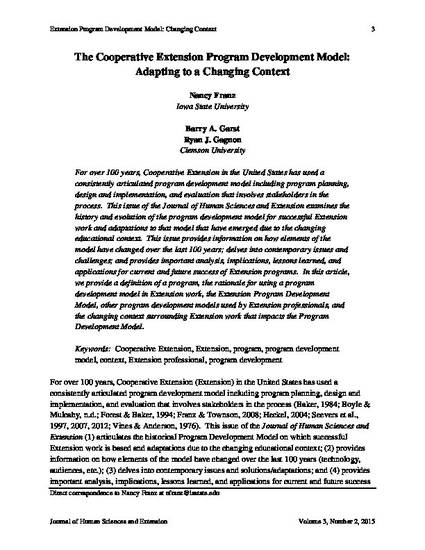
For over 100 years, Cooperative Extension in the United States has used a consistently articulated program development model including program planning, design and implementation, and evaluation that involves stakeholders in the process. This issue of the Journal of Human Sciences and Extension examines the history and evolution of the program development model for successful Extension work and adaptations to that model that have emerged due to the changing educational context. This issue provides information on how elements of the model have changed over the last 100 years; delves into contemporary issues and challenges; and provides important analysis, implications, lessons learned, and applications for current and future success of Extension programs. In this article, we provide a definition of a program, the rationale for using a program development model in Extension work, the Extension Program Development Model, other program development models used by Extension professionals, and the changing context surrounding Extension work that impacts the Program Development Model.
Available at: http://works.bepress.com/nancy_franz/44/

This article is from Journal of Human Sciences and Extension 3 (2015): 3–12. Posted with permission.